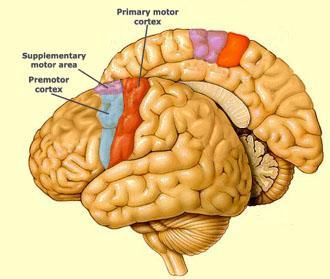How Does a Brain Remember Motor Sequence

Image Courtesy : thebrain.mcgill.ca
A beautiful musical tone from a piano or a saxophone is more than just a tune for a neuroscientist. A neuroscientist ponders what happens in the brain while playing the difficult sequences by finger movements in bringing out that beautiful tone. Taking a similar quest, researchers from the National Institute of Information and Communications Technology (NICT), Japan and Western University, Canada, have successfully done experiments that tell us how information is represented in a widespread area in the human cerebral cortex during performing skilled finger movement sequences.
The results have been published in the journal Neuron, published by Cell.
In memorising how to perform a difficult sequential finger movement, as the research reveals, the brain resorts to hierarchical organisation of task. This can be realised from common experiences as well. The best way to remember or produce a long and complex motor sequence is to divide them into several smaller pieces recursively. Let’s take an example—a musical piece can be remembered as a sequence of smaller chunks where each chunk represents a group of co-occurring notes. This kind of hierarchical organisation has been considered as the basis of our control of motor sequences from highly skilful tasks like playing music to day to day behaviour. But how exactly these hierarchical organisations are implemented in the brain had remained elusive to the neuroscientists.
The results of the Cell paper suggests that overlapping regions in the premotor and parietal cortices represent the sequences in multiple levels of motor hierarchy (e.g., chunks of a few finger movements, or chunks of a few chunks), whereas the individual finger movements (i.e., the lowest level in the hierarchy) were uniquely represented in the primary motor cortex. These results are significant in the sense that they uncovered the detailed map of cortical sequence representation in the human brain for the first time.
The researchers recorded brain activity with the help of the brain mapping technique known as Functional Magnetic Resonance Imaging (FMRI). Human participants were subjected to produce 8 different remembered sequences of 11 finger passes. “Remembering 8 different sequences of 11 finger presses is a tough task, so you will definitely need to organise them hierarchically,” says Diedrichsen, the study’s senior author and a Western Research Chair for Motor Control and Computational Neuroscience at the Western University, Canada. Adding to this, Yokoi, the study’s lead author said, “To study a hierarchy, you would really need the sequences to have this much of complexity. And currently it’s very hard to train animals to learn such sequences.”
Through a series of careful analyses, the team of researchers could decipher the hierarchical organisations that the brain undertakes in memorising the finger sequences. They reported that the brain adopts a three tier hierarchy—1. Individual finger presses, (2) chunks that consist of two or three finger presses and (3) entire sequences consisting of four chunks. They then characterise the FMRI recording patterns with respect to these hierarchies using computational techniques.
The FMRI recordings revealed that the patterns in the primary motor cortex, the area of the brain that controls finger movements, seemed to depend only on the individual finger movements, independent of the positioning in the sequence. The higher order motor areas in the brain like that of premotor and the parietal cortices were found to be involved in encoding the sequential context at the level of chunks or entire sequence. This suggests that, unlike the primary motor cortex, these areas know what was played before and what would come next after the ongoing finger press.
Moreover, the results also reveal that different brain areas collectively participate in the process of encoding sequential information, which stands contrary to the common assumption in the cognitive neuroscience that says—each level in the functional hierarchy would mirror the anatomical hierarchy, from the higher, association cortices (e.g., premotor or parietal cortices) down to the primary sensorimotor cortices. The mysterious coexistence of a clear anatomical separation (i.e., individual finger vs. other representations) and an overlap (i.e., chunk and sequence representations) sheds new light on the classical question of the correspondence between functional and anatomical hierarchies.
Get the latest reports & analysis with people's perspective on Protests, movements & deep analytical videos, discussions of the current affairs in your Telegram app. Subscribe to NewsClick's Telegram channel & get Real-Time updates on stories, as they get published on our website.















